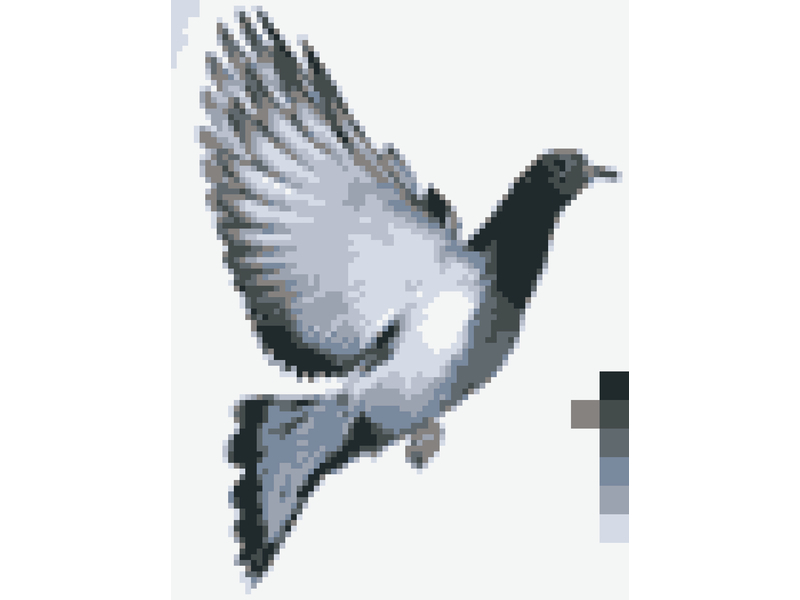You’ll be able to keep track of your colors more easily if you make a row of swatches in a blank area of your image. Using the Eyedropper tool, click in an area of your photo, then use the Marquee tool to create a small square. From the menu bar, choose Edit ⇒ Fill and click the Foreground Color option. Repeat this procedure for all the colors in your photo.
Convert your image from Indexed Color back to RGB color by selecting Image ⇒ Mode ⇒ RGB Color. This will make subsequent steps easier.
We want your printed version to be the same size as your cross-stitched version, but your printer may be unpredictable if you try to print only 16 pixels per inch. We’ll keep it happy by “upsampling” the image.
Again choose Image ⇒ Image Size from the menu bar. In the dialog box that opens, for the Resolution option, enter 160 if you’re going to use 16-count fabric, or enter 140 if you’re going to use 14-count fabric, and so on. Don’t click OK yet!
Now change the width from 80 to 800 pixels, and near the bottom of the dialog box where it shows you options to Resample Image, choose the Nearest Neighbor option (otherwise, your nice sharp pixels will get blurred). Now click OK, and you should be able to print your image full-size without problems.
You’ll need a grid (like graph paper) to help you count stitches. The easiest way is to print your image and draw a grid by hand, in colored pen. Some people find it easiest to use 1 grid square per pixel. I like using 1 grid line per 5 pixels to reduce the workload.












